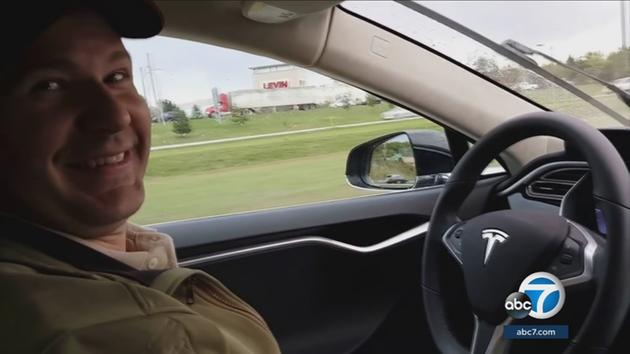The recent news that a Tesla driver was involved in a fatal accident while using his Model S in Autopilot mode made headlines last week. And for many people who were already on the fence about this technology, this accident confirms their suspicions about the lunacy of the self-driving movement.
 The driver, Joshua Brown, turned out to be a Tesla fan boy. He even made videos showing just how easy and safe it was to drive his electric car without using his hands. Until it wasn’t.
The driver, Joshua Brown, turned out to be a Tesla fan boy. He even made videos showing just how easy and safe it was to drive his electric car without using his hands. Until it wasn’t.
So does this high-visibility death set back autonomous cars? Tesla, responding to this tragic accident, noted the company had logged 130 million autonomous miles without a fatality, compared to every 94 million miles of normal driving in the U.S.
Interestingly, the story of Brown’s death and the outcry about the safety of self-driving cars runs counter to BMW‘s announcement last week they’ll have their own version of autonomous vehicles on the road by 2021, the first automaker to call its shot with the technology. The BMW technology will be different than Tesla’s, a collaboration with Intel and Mobileye. The BMW version is slated to be used in the iNext, the car that will replace the 7-Series “Bimmer,” and claims to handle the circumstance that led to Joshua Brown’s Tesla death.
So where does the auto industry stand on autonomous cars and what do these conflicting stories mean? Roger Lanctot of Strategy Analytics is known as the most connected guy in the connected car industry. This past weekend, I asked him for his forecast on this technology, and what it means to radio.
FJ: Will the Tesla accident set back the autonomous movement in any significant way?
RL: No The driver, who was a Navy SEAL, was watching a Harry Potter movie, according to reports. So there was some personal responsibility afoot. The forensic analysis of the sensor fail is underway and likely correlates to known weaknesses in camera and radar sensing systems and existing sensor fusion systems.

It merely points up the fact that the “promise” of self-driving will not live up to the hype for some time – unless cost is no object. Tesla recommends use only on highways – but does not offer any warranty regarding performance and requires driver and hands on the wheel – so this is not really self-driving.
Let’s call it self-delusion. But it’s really sad about the guy who died.
FJ: This was a tragic accident, but do other automakers see this Tesla fail through a schadenfreude lens or are they thinking “Glad it wasn’t us?”
RL: Car makers are looking to create something a little safer and which can only be used in defined areas. GM, Daimler, and Audi are working on a sort of enhanced cruise control with incremental advances toward autonomy – with self-driving a couple years away. True “self-driving” will emerge in commercial vehicles and shuttle buses first – it’s already happening all over the world.
FJ: Do you believe (or do the car makers and Google believe) that “drivers” will, in fact, be able to watch videos while in these vehicles in the future?
RL: Many years in the future, but based on the BMW-Intel-Mobileye press event, they clearly see increases in productivity: reading emails, conducting conference calls, on the road some time after 2021.
FJ: Do you see broadcast radio listening being negatively impacted by autonomous cars?
RL: There’s no substitute for local news, weather, sports, and traffic, but radio will need to become (and is becoming) a visual medium. DTS/iBiquity artist experience, SiriusXM metadata, etc.
 Like any technology that involves the safety of people, the risks are high. But it’s clear the auto companies, along with other tech partners, see the combination of autonomous and shared mobility as the inevitable future. As Ford Chairman Bill Ford recently noted, our highways will be teeming with more vehicles over the next 15 years, necessitating these technologies.
Like any technology that involves the safety of people, the risks are high. But it’s clear the auto companies, along with other tech partners, see the combination of autonomous and shared mobility as the inevitable future. As Ford Chairman Bill Ford recently noted, our highways will be teeming with more vehicles over the next 15 years, necessitating these technologies.
As he told Bloomberg recently, the future will see cars being part of the Internet of Things:
“All vehicles will be talking to each other, all vehicles will be talking to the infrastructure. Everything will be on a single network. Everything will be integrated, and your ability to move from point A to point B will be greatly enhanced.”
For Josh Brown, that future didn’t come soon enough.
For the rest of us, it’s coming faster than we ever thought.
- What To Do If Your Radio Station Goes Through A Midlife Crisis - April 25, 2025
- A 2020 Lesson?It Could All Be Gone In A Flash - April 24, 2025
- How AI Can Give Radio Personalities More…PERSONALITY - April 23, 2025




Don’t forget to mention the need to continue making the entire traffic system safer — including making large trucks safer to be around. If there had been a side guard on the tractor-trailer in this crash, it might not have been a tragedy.
https://annaleahmary.com/2016/07/could-tesla-crash-fatality-have-been-prevented-if-trucks-were-required-to-have-sideguards/
https://annaleahmary.com/2016/07/tesla-crash-fatality-could-have-been-stopped-by-side-guards-tell-nhtsa-to-require-them-on-trucks/
Marianne, there are a lot of moving parts to the autonomous story (no pun intended), and you bring up another good one. There’s a lot of research that must be done, not to mention convincing an increasingly skeptical public this is a good idea. Thanks for taking the time and adding to the conversation.
Driving a car is one of life’s passages, pleasures and should NOT be an automatic experience. I’m all in for safety, radar, even flashing signs that call attention to other drivers’ inadequacies (i.e. stupid, careless, dangerous, “you dumb jerk!” behavior). Self-drive features should only be enabled as a double check with a competent driver at the wheel to insure maximum safety for all. “And, if you we’re listening in the car, thanks very much for the ride!”
Many people share your feelings, Clark. But the ongoing signals we keep hearing from the automakers and tech giants is that autonomous is coming, whether we like it or not. Thanks for the comment.
If the concept of lightly trained, wholly unmonitored humans driving 4000 lb steel sleds, though a concrete maze at speeds up to 80 mph with 253 million other unrestrained sleds, were introduced today, no sane person would think it was a good idea. 32,675 Americans died in human controlled (?) cars in 2014. I’ll bet that fewer people will die in the run up to the fast approaching age of autonomous vehicles than perished last month in our current,”normal” system. As to what they’ll be listening to or watching while the new normal arrives is going to interesting to discover. Thanks for the help, Fred.
Dave, thanks for the insightful comments. We somehow don’t take into account just how many traffic fatalities there are because we have the sense we’re in control. I believe that most of those working on this technology would agree wholeheartedly with your assessment. It will be a long process, but it will happen. Appreciate you chiming in.